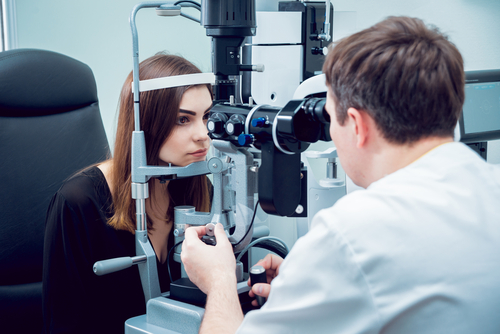Can LASIK Correct Astigmatism and Nearsightedness?
If you have astigmatism or nearsightedness, you may wonder if LASIK eye surgery can help correct your vision. The good news is that LASIK is a highly effective treatment for both of these common refractive errors.
Keep reading to learn what astigmatism and nearsightedness are, how LASIK works, and whether it can fix these refractive errors!
What is Astigmatism?
Astigmatism is a refractive error that occurs when the cornea or lens of the eye has an irregular shape, causing blurred or distorted vision at all distances. Instead of being perfectly spherical, an eye with astigmatism has a more oval-shaped cornea or lens, which prevents light from focusing properly on the retina.
Symptoms of astigmatism may include eyestrain, headaches, and squinting. Typically, astigmatism is corrected with glasses or contact lenses.
What is Nearsightedness?
Nearsightedness, also known as myopia, is a condition where you can see nearby objects clearly, but distant objects appear blurry. It happens when the eyeball is too long, or the cornea is too curved, causing light to focus in front of the retina instead of directly on it.
Nearsightedness is also a very common refractive error, affecting millions of people worldwide. Like astigmatism, nearsightedness can be easily corrected by glasses or contact lenses.
What is LASIK?
LASIK, which stands for Laser-Assisted In Situ Keratomileusis, is a popular laser eye surgery that reshapes the cornea to correct refractive errors such as astigmatism, nearsightedness, and farsightedness. During the procedure, a thin flap is created on the surface of the cornea, which is then folded back to allow the laser to remove microscopic amounts of tissue from the inner layers of the cornea.
This reshaping process helps light focus properly on the retina, resulting in clearer vision.
How Does LASIK Correct Astigmatism and Nearsightedness?
LASIK corrects astigmatism by reshaping the irregular cornea into a more symmetrical shape, allowing light to focus correctly on the retina. The laser is programmed to remove tissue in a specific pattern based on detailed measurements of your eye taken before the procedure.
By adjusting the curvature of the cornea, LASIK can effectively treat astigmatism, often significantly reducing the need for glasses or contact lenses. Similarly, LASIK corrects nearsightedness by flattening the central portion of the cornea, which helps light focus directly on the retina instead of in front of it.
The amount of tissue removed depends on the severity of your nearsightedness, with more tissue being removed for higher prescriptions.
Will LASIK Fix Astigmatism?
LASIK is a highly successful treatment for astigmatism. In fact, LASIK has been shown to correct astigmatism more effectively than glasses or contact lenses in many cases.
However, the success of the procedure depends on factors such as the severity of your astigmatism, the stability of your vision, and the overall health of your eyes. A comprehensive eye exam and consultation with your eye doctor at Mid Ohio Eye can help determine if you are a good candidate for the procedure.
LASIK is a safe and effective way to correct both astigmatism and nearsightedness, allowing you to reduce or eliminate your dependence on visual aids.
Are you considering LASIK or want to learn if you might be a good candidate for the procedure? Schedule a LASIK Evaluation at Mid Ohio Eye in Columbus, OH, today!










